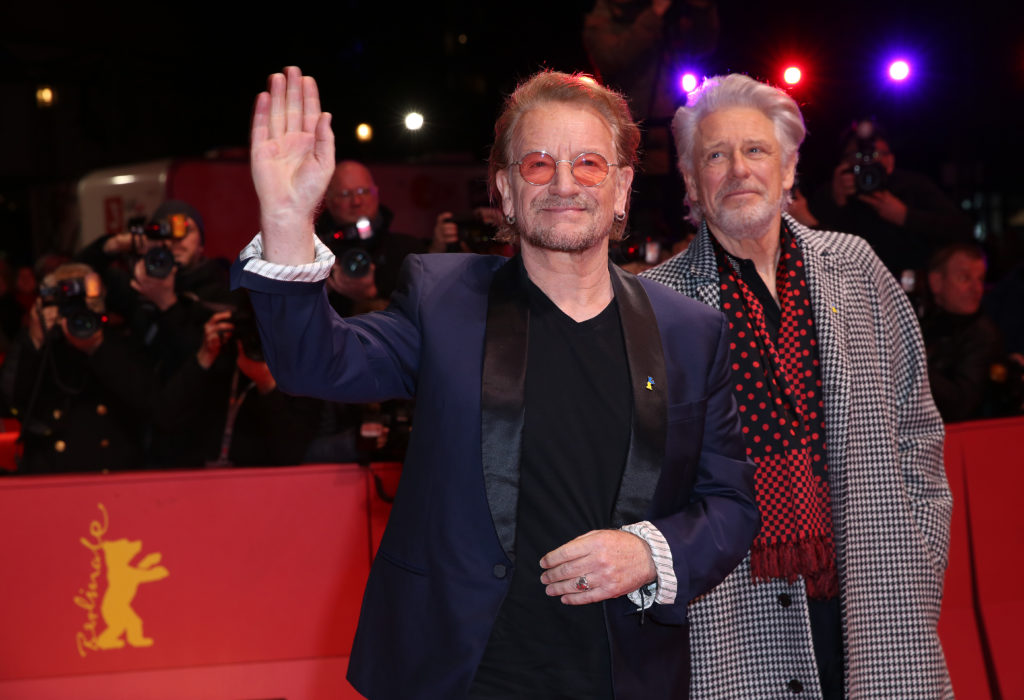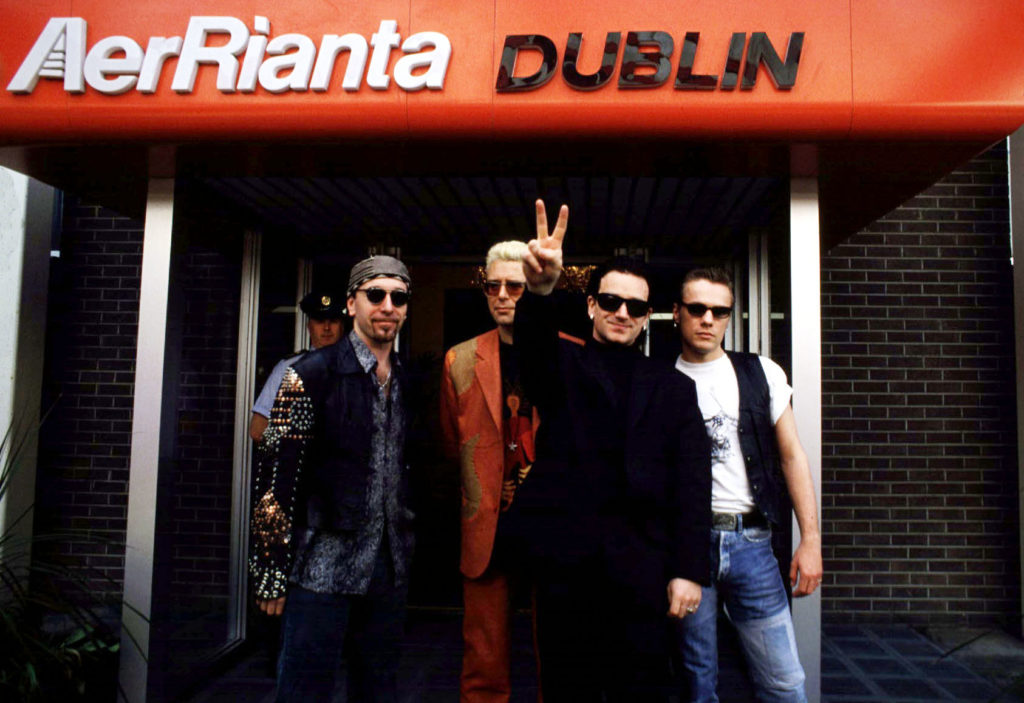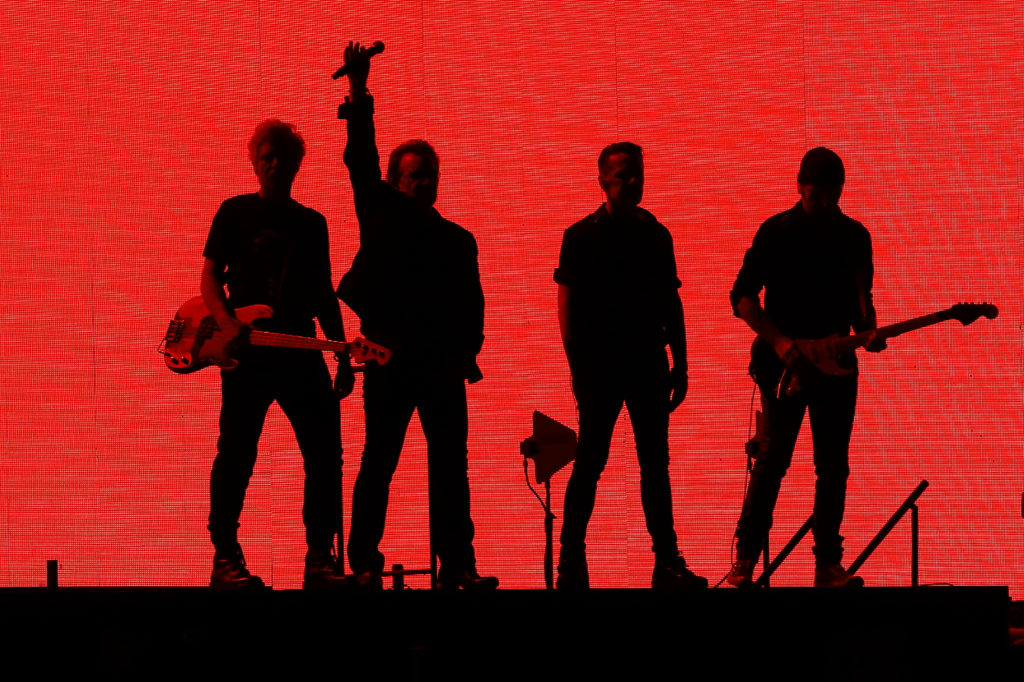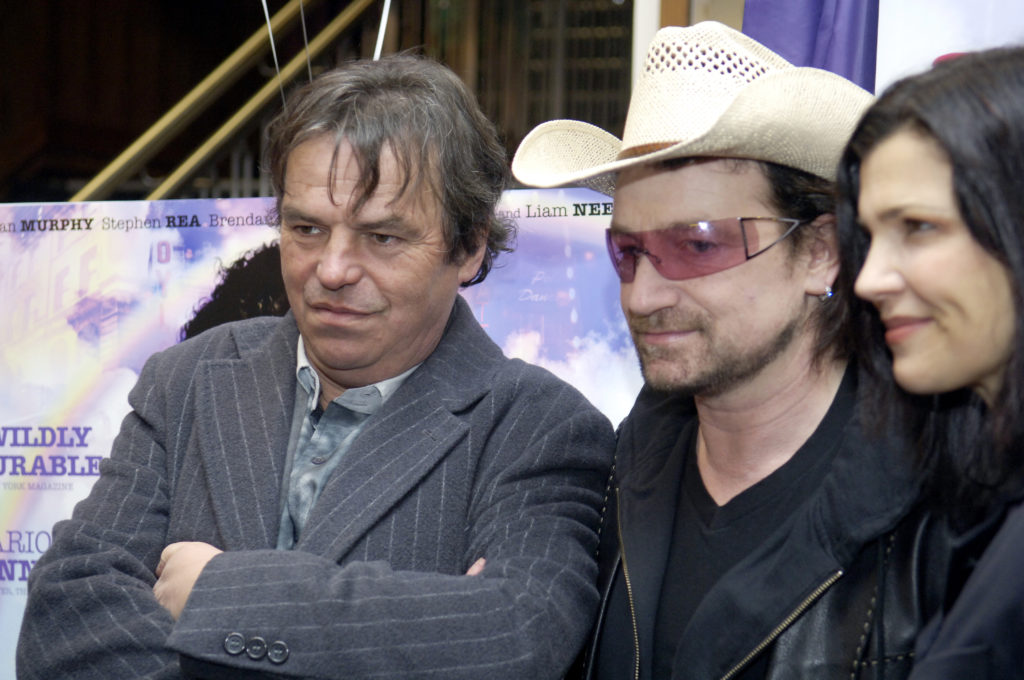TRUST U2’s soothsayer and drummer Larry Mullen Jr. to state the obvious and call out what he viewed as the musical variant of the Emperor’s New Clothes.
When Original Soundtracks 1 was released in November 1995, he commented, “There's a thin line between interesting music and self-indulgence. We crossed it on the Passengers record.”
Seven years later, Mullen Jr. was once again called upon to gather his thoughts on the least-known and poorest-selling album in U2’s back catalogue.
His considered opinion? “It still hasn’t grown on me.”
 Bono (L) and bassist Adam Clayton of U2 attend the 'Kiss The Future' documentary film premiere during the 73rd Berlinale International Film Festival Berlin on February 19, 2023 in Berlin, Germany. (Photo by Adam Berry/Getty Images)
Bono (L) and bassist Adam Clayton of U2 attend the 'Kiss The Future' documentary film premiere during the 73rd Berlinale International Film Festival Berlin on February 19, 2023 in Berlin, Germany. (Photo by Adam Berry/Getty Images)What to make of the U2 album that comprises a collection of unconventional songs written for (mostly) imaginary films?
What to think about the U2 album viewed as so experimental that they decided to release it under the pseudonym Passengers, thereby burying it before it even came out? Such was the album’s lack of impact that it no longer features in U2’s official discography.
On the band’s official website u2.com, such a decision was arrived at because ‘the band didn’t want people to get confused and think the album was the next U2 record…’
This rings a tad hollow. They claim the errant album was a side project and therefore independent of them, yet all album tracks were written by each band member, along with producer Brian Eno (and one or two other people, including Howie B, who would go on to co-produce their 1997 album, Pop).
 U2's Passengers, Original Soundtracks 1 release
U2's Passengers, Original Soundtracks 1 releaseDid we mention Brian Eno? Yes, we certainly did. The blame for the ideas behind Original Soundtracks 1 can be laid squarely at Eno’s feet.
When U2 were close to completing the songs for 1993’s Zooropa, the band’s creative input, said Eno, came to a sudden halt.
“In the studio, it’s easy to get to the screwdriver level,” he said around the time of the release of Original Soundtracks 1, “where you’re debating about the slightest things and getting obsessive. I suggested we do some improvising sessions, just turn on the tape and play… It was designed to open us up a little, and it proved to be a good way of originating music.”
What happened next wasn't unusual in terms of U2 in the studio.
From their early days to the present, a form of improvisation would begin, initially by randomly coming up with music scraps that, eventually, would morph from fragments into something more structurally coherent.
As one of the music industry’s most adventurous producers, such a method - haphazard but with serious intentions – was grist to Eno’s proverbial mill.
“I love that sense of discovery,” he said, “so I told them that we’d just work with whatever we got. What we’d generate was not a map of the material, but the material itself.”
 Rock band U2 give the peace sign while standing in front of a Aer Rianta sign (Logo) before they leave Dublin Airport to head of on their World Zoo Tv Tour in 1993
Rock band U2 give the peace sign while standing in front of a Aer Rianta sign (Logo) before they leave Dublin Airport to head of on their World Zoo Tv Tour in 1993Cue over 24 hours’ worth of material that wavered between the producer’s well-known preference for slowly drifting, ear-to-ear ambient music and U2’s pop/rock inclinations.
In what could be viewed as a creative Clash of the Titans, Eno’s sonic economy of scale flattened U2’s widescreen proclivities, resulting in not so much an archetypal ‘game of two halves’ album but more a scattershot collection of tracks that have divided U2 fans for three decades.
When the recording sessions ended, Eno would retrieve and archive the music and then use his skills as a producer to develop and arrange the music into manageable forms.
“Listening to the original improvisations as they came off the studio floor, you feel the excitement of the process. The dynamic between things falling apart slightly and coming back together again is an important aspect of improvisation. You have to be careful not to disturb the organic flow…”
Which is all well and good, but what if the organic flow falters instead of surges? While the core of the album is to be found in the instrumental tracks, which range from elegant (United Colours, Slug, One Minute Warning) to bland (Beach Sequence, A Different Kind of Blue, Theme from the Swan).
These tracks are where Eno and The Edge coalesce in a flurry of sonic experimentation that harks back in some ways to their work on U2’s 1984 album, The Unforgettable Fire.
Taken as a whole, however, they’re as stimulating as watching water evaporate. The songs snag the attention, of course, mostly for the right reasons.
 U2 perform at the National Stadium in Singapore in 2019
U2 perform at the National Stadium in Singapore in 2019The best known are Miss Sarajevo (which features a guest vocal performance by Luciano Pavarotti and was the sole track from the album to gain any significant radio airplay) and Your Blue Room (which is so ‘U2’, it wouldn’t have been out of place on any subsequent album).
The album, alas, contains the worst U2 song ever, Elvis Ate America, words about which are best left unsaid.
At the time of release, the reviews gyrated between negative, positive, and downright puzzling.
Spin magazine concluded that the parts of Original Soundtracks 1 ‘that are good are not surprising, and the parts that are surprising are not that good.’
Rolling Stone was slightly more upbeat. ‘The record is not only consistent with U2’s sonically playful early-‘90s output, but it also showcases the band at its most musically committed, fully serving individual songs rather than notions of self-presentation.’
Ditto the Los Angeles Times, which stated that the album ‘works as a flowing whole, characterised by sheets of gentle electronic sounds and an understated, reptilian pulse, accented with delicate, bell-like sounds or haunting sonic ghosts.’
Entertainment Weekly, meanwhile, hedged its bets with descriptions of the album veering from ‘resembling musically inclined robots jamming on a day off’, ‘a fairly slight album, mostly for U2 diehards’ and ‘just another side trip on one of the most intriguing musical journeys of the past decade’.
Everyone, of course, was waiting for the Hot Press review.
Throughout the pre-Internet ‘80s and ‘90s (in particular), the endorsement of Hot Press was considered a standard rite of passage for any Irish band’s album, but especially a U2 album.
The magazine's most lauded writer (justifiably so) was Bill Graham, the person who had not only championed U2 from 1978 onwards but who had written about them in a pre-Matrix, critical-thinking fashion that no music writer before or since has been able to match. What did Bill think? What would Bill say?
“Let’s not argue whether or not this is U2’s best album but instead agree that it is certainly their most relaxed and their most playful,” he began.
 Irish Film Director Neil Jordan pictured with Bono and his wife Ali at the European premiere of his movie 'Breakfast on Pluto', in 2006
Irish Film Director Neil Jordan pictured with Bono and his wife Ali at the European premiere of his movie 'Breakfast on Pluto', in 2006Graham proclaimed Original Soundtracks 1 as “a serious proposition exactly because it’s such unbuttoned, easy fun, almost a cavalcade of the in-jokes that perhaps only their most educated fans will appreciate and enjoy”.
The point of U2, he concluded (and this is less than 20 years after they formed), “is that they’ve survived and succeeded above anyone else from their generation precisely because of their musical adaptability. Hear this album to understand why”.
Sometime later this year, Original Soundtracks 1 (a U2 album that isn’t really a U2 album, more a Brian Eno gig with U2 as the backing band) will be on the receiving end of celebratory birthday cakes and candles.
Irrespective of its quality or intent, it remains the odd one out in the back catalogue.
Some think it’s rubbish. Some think a good mini-album. Some regard it as a moderately successful artistic risk-taking exercise.
And some forget (or aren’t aware) that it simultaneously inherits the atmospheres of 1993’s Zooropa and delivers the origins of 1997’s Pop. A trilogy, no less.
Not that Bono necessarily agrees. Original Soundtracks 1, he has said, “feels like it’s been set on the bullet train in Tokyo".
Mind the gap! All aboard!

